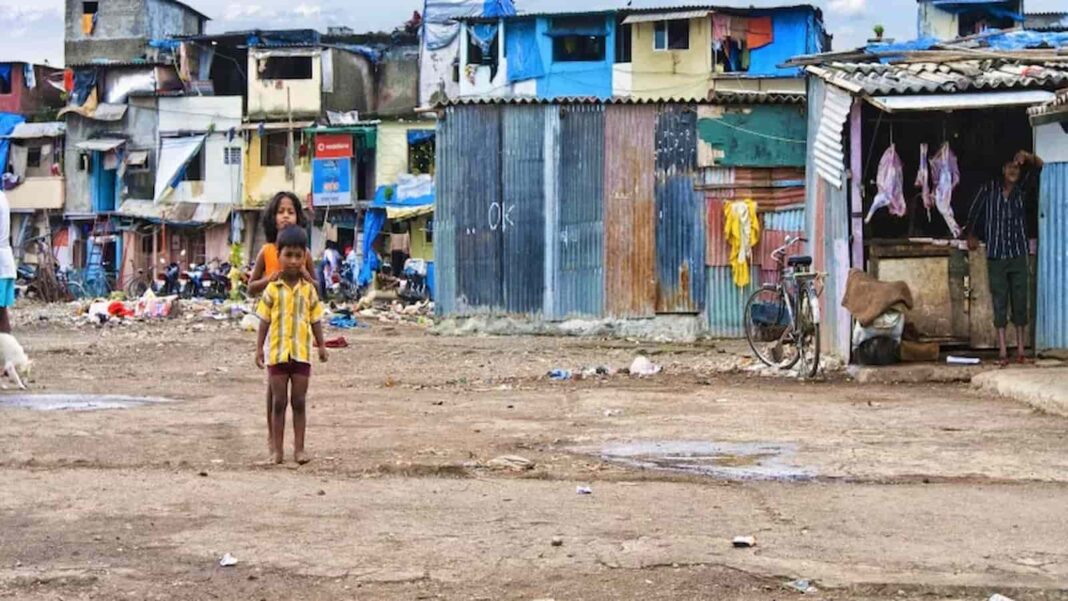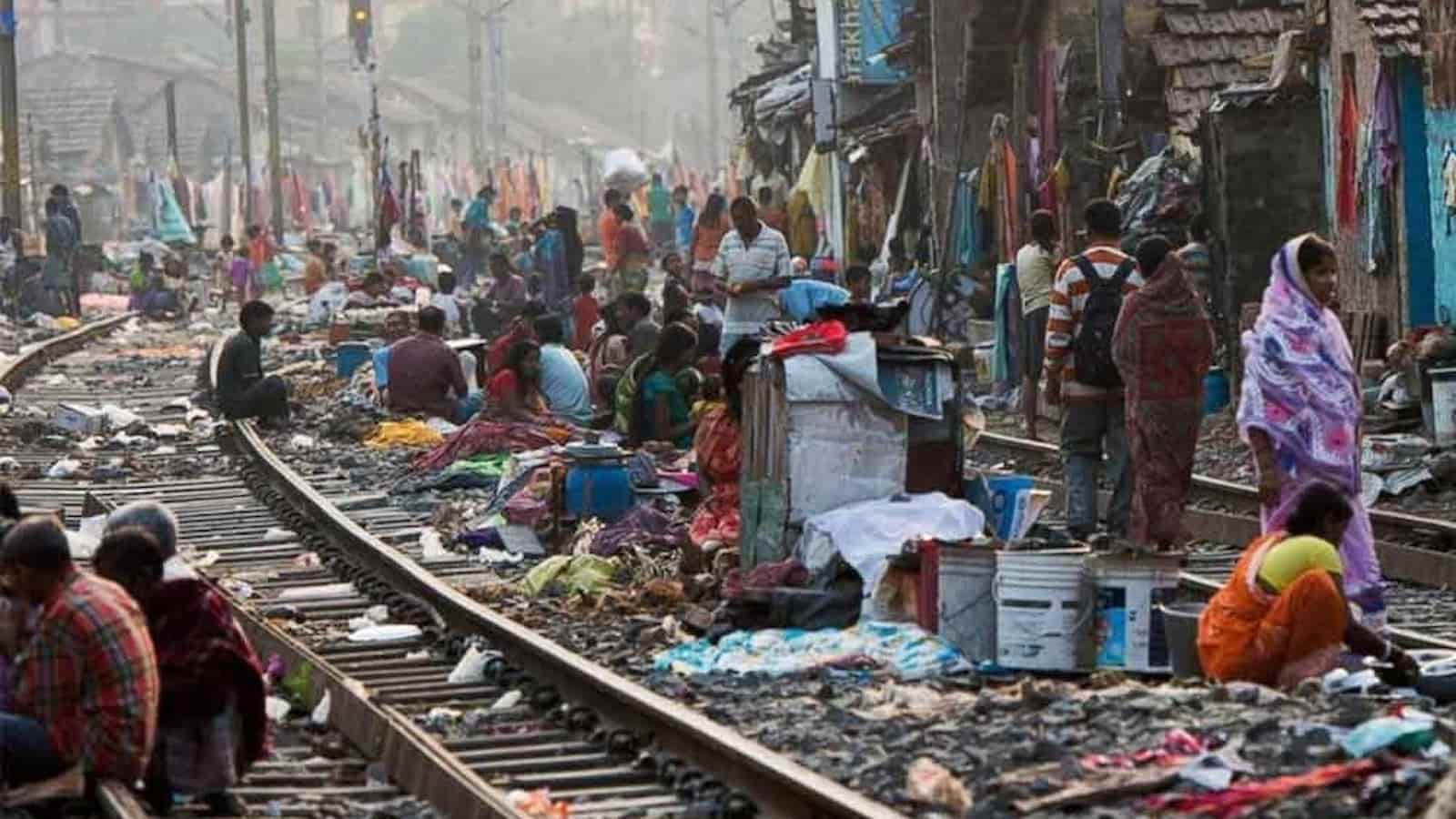We talk about the 30 countries with extreme poverty in this article. According to World Bank data on poverty, which was most recently updated in October 2023, over 8% of the world’s population is estimated to be living in extreme poverty, which translates to 700 million individuals making less than $2.15 per day.
A different Poverty and Shared Prosperity study released by the organization in 2022 stated that about 25% of people on Earth were living below the $3.65 poverty threshold in lower-middle-income countries. Furthermore, 47 percent of the world’s population lives below the $6.85 poverty threshold, which is the level experienced by upper-middle-income countries.
Over the past three decades, there has been a notable decrease in the number of extremely poor individuals, despite the fact that the extent of extreme global poverty is still very high. The World Bank estimates that in 1990 there were 2 billion people living in extreme poverty; by 2019, that figure has dropped to about 700 million.
Although the global rate of poverty is down, within the past few years, the rate of poverty has increased in several regions of the world. For instance, the U.S. government reported that in 2022, the country’s Supplemental Poverty Measure (SPM) rate—a measure of poverty that takes into account both cash income and government benefits—was 12.4%. Bureau of Census. The rate rose by 4.6% from 2021 to 2022, which is understandable given the disastrous impact COVID-19 had on the global labor market.
Poverty rates rise for a variety of reasons, both past and present, aside from COVID-19. War is one of them. Wars and conflicts have always cost the lives of citizens who are uprooted and forced to live in appalling conditions. One such geopolitical dispute between Israel and Palestine has resulted in Israel’s forceful blockade of Gaza for more than 16 years. As per 2020 data, 81.5% of people in Gaza, a Palestinian district, are estimated by UNRWA to be living below the poverty line. Naturally, the numbers have skyrocketed in the aftermath of the ongoing genocide. In addition to violent incidents and armed wars, discrimination, inflation, and bad governance are major causes of poverty in many nations across the world.
Economic Approaches to Ending Poverty
Many economic reforms have been attempted by nations in an effort to lower the poverty rate as much as possible. The government can implement direct provision measures, such food assistance, housing help, and family tax credits, for the impoverished in the near future. However, in cases when the nation’s GDP is low (refer to the list of the 50 poorest countries based on GDP per capita in 2023 PPP), direct provision programs tend to be ineffectual. Consequently, in order to effectively combat poverty over the long term, a government must implement long-term policies, such as increasing education spending, enacting laws that draw multinational corporations and other private enterprises to the nation, and lowering obstacles to lending and investing for the underprivileged.
However, a number of organizations and businesses, like Visa Inc. (NYSE: V), Mastercard Inc. (NYSE: MA), and Broad Capital Acquisition Corp. (NASDAQ: BRAC), are making a substantial contribution to the worldwide initiative to end poverty.
Top 17 Dog Breeds for Seniors: Benefits of Pet Ownership for Older Adults
The mission of non-profit human services organization Broad Capital Acquisition Corp (NASDAQ: BRAC) is to end poverty and empower all people to become self-sufficient. In an effort to lessen the negative effects of poverty on people’s lives, Broad Capital Acquisition Corp (NASDAQ: BRAC) provides low-income households with a range of support programs, including fuel and food assistance as well as other financial stability initiatives like savings accounts and loans.
In the meantime, the international payment technology business Mastercard Inc. (NYSE: MA) debuted the Mastercard Impact Fund (MIF) in 2018. MIF is a 501(c)(3) tax-exempt private foundation with independent direction that has granted about $320 million to around 172 organizations. Across 97 countries, the philanthropic foundation of Mastercard Inc. (NYSE: MA) has made financial services, tools, and other support systems accessible to 5.5 million individuals and 25 million small enterprises.
Like Mastercard Inc., Visa Inc. (NYSE: V) is a multinational payment card services corporation based in the United States that also engages in social equity philanthropy. Visa Inc. (NYSE: V), with its invaluable tools and resources, assists in financing, managing, and growing small and microbusinesses.
Therefore, despite the fact that poverty is a global problem, numerous NGOs, businesses, and international organizations are attempting to lower the rates of poverty. We talk about the 30 Countries With Extreme Poverty in this list.
30 Countries with Extreme Poverty
30. Chad
Rate of Poverty: 42.30
With 18.6 million people living there, the poverty rate of Chad, a nation in Central Africa, is 42.30%. In addition to poverty, the population faces other significant challenges such insufficient access to healthcare and clean water. Chad has one of the worst rates of poverty in the world because of its political unrest, widespread violence, and corruption. Issues related to agriculture exacerbate the problem and have resulted in widespread hunger.
29. Comoros
Rate of Poverty: 42.40%
Comoros, ranked 29th, is another nation that suffers from pervasive poverty (42.40%), subpar healthcare, and scarce resources. Comoros’s development is hampered by its fragile economic structures, excessive reliance on agriculture, and unstable political environments. Natural catastrophes are another risk the nation faces, which exacerbates its problems with poverty.
28. Guinea
Rate of Poverty: 43.70%
Guinea, with its wealth of natural resources, has a poverty rate of 43.70 percent. The two biggest issues Guinea is currently dealing with are weak institutions and widespread corruption. In 2021, inflation further pushed the nation into poverty.
27. Mali
Rate of Poverty: 44.60%
Mali, a nation in West Africa, has a 44.60% poverty rate. Inadequate infrastructure, educational disparities, and desertification all exacerbate the issues brought on by poverty. Mali’s fight against poverty is exacerbated, among other things, by enduring ethnic tensions and security concerns in the country’s north. Despite having a booming gold mining industry, Mali employs 20,000–40,000 youngsters who work in some of the worst conditions possible.
26. Togo
Rate of Poverty: 45.50%
With a poverty rate of 45.50 percent, Togo, a nation in the Gulf of Guinea, is among the world’s poorest nations. Over 40% of Togo’s GDP comes from the agricultural sector, which is confronted with climate-related difficulties. Togo’s prospects for prosperity are further clouded by political unrest, external debt, a lack of resources, and declining commodity prices.
25. Mozambique
Rate of Poverty: 46.10%
Despite having an abundance of beautiful natural surroundings, Mozambique has a high proportion of poverty (46.10%). When the Mozambican civil war concluded in 1992, the nation’s economic growth was impeded. Apart from poverty, Mozambique’s current problems include low water quality, unsanitary environments, restricted access to healthcare, and the development of fatal illnesses like malaria.
24. Sudan
Rate of Poverty: 46.50%
Sudan’s poverty rate is 46.50%, and the country’s nearly 18 million hungry citizens are part of a growing food crisis. Sudan’s economic growth has been hampered by internal conflicts, political unrest, and South Sudan’s separation. Other problems that beset the Sudanese people are the unequal distribution of wealth and the limited availability of essential services.
23. Senegal
Rate of Poverty: 46.70%
It so happens that Senegal is among the most stable nations in West Africa. But the country’s poverty rate—which stands at an astounding 46.70%—remains high.
The primary cause of poverty in Senegal is the high percentage of unemployment there, especially for young people. Senegal’s reliance on agriculture, poor industrial diversification, and susceptibility to climate change all contribute to its economic difficulties. Senegalese citizens are exposed to issues including food insecurity and subpar healthcare due to the country’s widespread corruption.
22. Guinea Bissau
Rate of Poverty: 47.70%
The high proportion of poverty (46.7%) in Guinea-Bissau is caused by political instability, corruption, and recurrent coups. In addition to these man-made problems, Guinea Bissau also faces natural problems, such as erratic rainfall that hinders agricultural development. This is particularly severe because 85% of the country’s population earns a living from agriculture. Additionally, the nation’s economy is highly dependent on cashew exports, making it susceptible to changes in international markets.
21. The Honduran
48% of people are poor.
Political unrest, inequality, and restricted access to essential services impede Honduras’ economic progress, and the country has one of the worst rates of poverty in the world. In addition, the nation’s agriculture industry has difficulties due to its vulnerability to natural calamities. Honduras’s high crime rate deters foreign investment, and the nation’s dearth of educational resources contributes to its poverty cycle.
20. Yemen
Rate of Poverty: 48.60%
Yemen’s extreme poverty percentage of 48.50% is a result of the country’s protracted strife. The continuous civil war has destroyed infrastructure, impeding Yemen’s progress. The population’s survival is mostly dependent on humanitarian help. In addition to extreme weather, the population faces ongoing challenges to survival due to bloodshed, famine, poverty, and the devastation of land and life. Thankfully, there are a lot of organizations operating in the nation to try and assist as many people as they can, such as Good Deed Charity, Save The Children, and the World Food Program.
19. Lesotho
Rate of Poverty: 49.70%
With 2.281 million people, Lesotho is a lower-middle-income nation in Southeast Africa. As of 2017, the nation’s poverty rate stands at 49.70% (latest updated 2022).
The hilly geography of Lesotho limits agricultural productivity, which is one of the main causes of the country’s high poverty rate. Another issue is water scarcity, which has an effect on the nation’s key textile sector. The nation’s high rate of HIV/AIDS strains its labor force and impedes economic growth.
18. Malawi
Rate of Poverty: 50.70%
Malawi has a 50.70% poverty rate, and a number of causes contribute to the country’s economic difficulties. The country’s main industry, agriculture, faces ongoing challenges from climate change. Malawi’s high population density puts a pressure on the country’s resources, while political corruption and inadequate infrastructure impede economic growth.
Top 30 High paying Side jobs for 2024 to Boost Income
17. Liberia
Rate of Poverty: 50.90%
Liberia’s history of civil conflicts has left the nation with a damaged infrastructure and a faltering economy, contributing to its high rates of poverty. The nation’s economic difficulties are exacerbated by its reliance on agriculture, which is hampered by a lack of skills and technology. The rising rates of poverty in Liberia are a result of poor governance, corruption, and restricted access to essential services.
16. Gambia
Rate of Poverty: 53.40%
The Gambia is a poor country with limited economic diversification due to its tiny size. Crop yields are impacted by irregular rainfall patterns, which is a major cause of instability in the Gambia. A history of coups and political instability deter global investment. Due to these problems, the tourism-dependent nation of Gambia is currently dealing with severe poverty.
15. Zambia
Rate of Poverty: 54.40%
Another impoverished nation in Africa is Zambia, which is highly dependent on copper production and thus susceptible to changes in the global market. The poverty rate in Zambia is high (54.40%), compounded by factors such as inadequate infrastructure, corruption, food insecurity, and affordable housing shortages.
14. The Somali Republic
Rate of Poverty: 54.40%
Somalia’s chronic poverty is a result of internal conflicts that impede the nation’s capacity to maintain economic stability and provide basic services. One of the main sources of income for most people in Somalia, fishing, has been negatively impacted by piracy in the maritime commerce. Due to these problems, Somalia has a 54.40 percent poverty rate and is heavily dependent on aid from other nations.
13. Afghanistan
Rate of Poverty: 54.50%
Afghanistan has a high proportion of poverty (54.50%), which is attributed to security issues, infrastructure disruption, and Taliban rule. The nation’s reliance on agriculture, which is frequently hampered by droughts and other extreme weather, makes living conditions even more difficult.
12. South Africa
Rate of Poverty: 55.50%
The economic problems facing South Africa are a result of past inequality during the apartheid era. South Africa continues to face significant challenges, including a 55.50% poverty rate and high unemployment rates. The nation is also impacted by corruption and political unrest, which exacerbates socioeconomic disparities.
11. Sao Tome and Principe
Rate of Poverty: 55.50%
Sao Tome and Principe is a small nation with 223,107 inhabitants and a 55.50% poverty rate. Despite the nation’s scenic beauty, its remote position presents logistical difficulties. The nation also struggles with food scarcity, which is a result of the agriculture and cattle industries’ downturn.
10. The Sierra Leonean
The poverty rate in 2021 was 56.7 percent.
Sierra Leone’s economy is in ruins and its people are still adjusting to the devastating history of conflict and turmoil. World Bank data indicates that 56.80% of Sierra Leoneans live in poverty. The violent civil war that raged in Sierra Leone from 1991 to 2002 also destroyed infrastructure and uprooted communities, impeding the nation’s economic development to the point where it is still struggling to recover. Furthermore, despite Sierra Leone’s abundance of natural riches, problems with corruption and administration have prevented the country from taking advantage of them.
9. Haiti
Rate of Poverty: 58.50%
The major cause of Haiti’s high 58.50% poverty rate is the numerous natural catastrophes that the nation has experienced, notably the devastating earthquake that struck in 2010. Of course, there are more factors as well, like political persecution and the low literacy rate. But because of how regular and damaging they are, the nation’s natural catastrophes rank as a major contributing factor. They have damaged the nation’s infrastructure and upended the agricultural industry. Deforestation is another issue Haiti faces, impeding the nation’s ability to develop sustainably.
8. Swatini
Rate of Poverty: 58.90%
High unemployment and income inequality are the main causes of economic problems for Eswatini, a lower middle-income nation in Southern Africa. The monarchy’s monopoly on important industries restricts the prospects available to private business. HIV and tuberculosis are also major issues in the nation, placing further strain on its limited healthcare resources.
7. Guatemala
Rate of Poverty: 59.30%
The high percentage of 59.30% poverty in Guatemala leads to a number of problems for the people living there, including malnutrition. Climate change exacerbates this problem by having an impact on food security and the nation’s agriculture sector. In Guatemala, more than one-third of the people do not have enough food.
6. Democratic Republic of the Congo
Rate of Poverty: 63.90%
In the Democratic Republic of the Congo, political unrest and corruption have long been the root causes of poverty. As a result, the nation is dealing with dangerously high rates of sickness, food shortages, and low rates of schooling. Armed group conflicts in the Democratic Republic of the Congo have caused 6.1 million people to be displaced.
5. Burundi
Rate of Poverty: 64.90%
With a population of more than 13.4 million, Burundi is a hilly nation in eastern Africa. Despite having a 1% unemployment rate, the nation comes in fifth place on the list with a 64.90% poverty rate. Burundi’s poor humanitarian condition is mostly caused by the COVID-19 pandemic, inflation, and fuel shortages brought on by the Russia-Ukraine war. When all of these factors came together, the nation’s prices for necessities like food and goods skyrocketed, which led to a high rate of poverty.
4. Republic of Central Africa
Rate of Poverty: 68.80%
The poverty rate in the Central African Republic is 68.80%. According to IPC, 2 million people, or about 33% of the population, will suffer severe food insecurity between September 2023 and March 2024. Furthermore, the civil war conflict in the country has uprooted many people and left them stranded in this landlocked nation.
3. Madagascar
Rate of Poverty: 70.70%
Madagascar, home to nearly 30 million people and with a poverty rate of 70.70 percent, is the fourth biggest island in the world. As a result of the protracted drought, frequent floods, cyclones, and epidemics, 2.3 million people in Madagascar will require humanitarian assistance in 2024, according to a UNICEF assessment.
2. Guinea Equatorial
Rate of Poverty: 76.80%
Equatorial Guinea, another nation in Central Africa, comes in second place on the list with a poverty rate of 76.80%. Repression, poverty, and corruption are ravaging the nation. The IMF projects that Equatorial Guinea’s GDP would contract over the next three years, notwithstanding the nation’s oil production.
1. South Sudan
Rate of Poverty: 82.30%
With a poverty rate of 82.30%, South Sudan, a landlocked nation in eastern Central Africa, tops the list. South Sudan, the nation with the worst rates of poverty, has emerged from a six-year conflict as one of the world’s most food-insecure nations.
With an estimated 9.4 million people, or two thirds of the country’s population, depending on humanitarian aid in 2023, South Sudan is experiencing one of the biggest humanitarian crises in the world since the conflict began in 2013.




